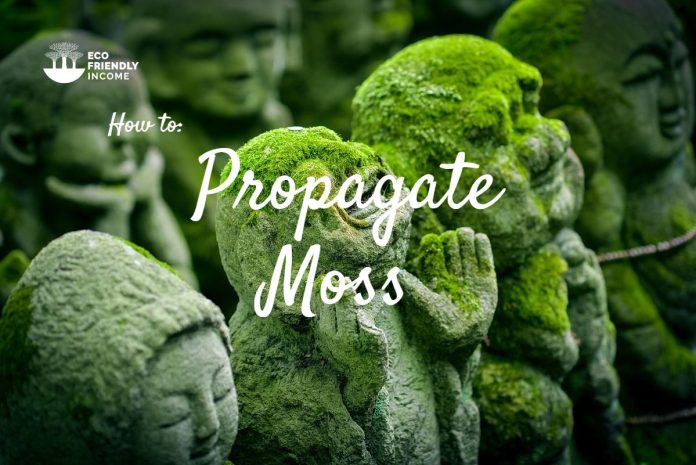If you want to grow and propagate moss, you’ll need to learn a few things first.
Mosses are the predecessors of modern plants, which means they have many of the same characteristics as modern plants, but growing and propagating them is different.
For example, mosses have stems and leaves but do not have roots or seeds for reproduction.
Instead of roots, they have rhizoids, and instead of seeds, they have spores.
Let’s dig deeper:
What Exactly is Moss?
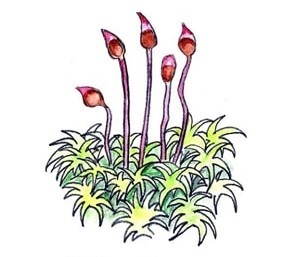
First, the word moss is often used in a general way but mosses are actually sub-families of a type of organism called a bryophyte.
Bryophytes, in short, are non-vascular seedless plants.
Mosses have two important visual characteristics:
- The gametophyte: The stems and leaves with different shapes & patterns.
- The sporophytes: The spore-distributing stalks, with capsules of different shapes.
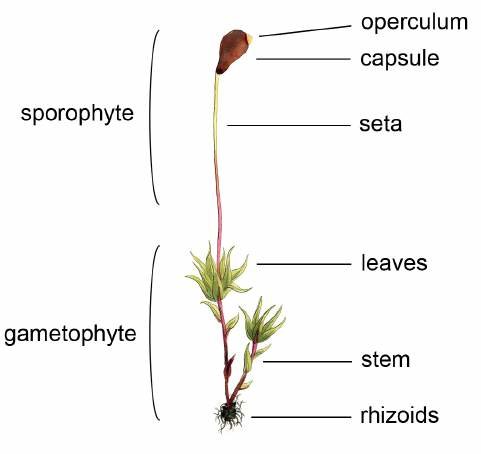
How does moss reproduce?
Moss are some of the oldest organisms on the planet, their reproductive system is efficient. They can reproduce sexually and asexually.
- The sporophytes are the reproductive organ of moss. They create spores that get picked up by insects or the wind. This is the main technique mosses use to spread their colonies to locations distances away.
- Mosses can also reproduce asexually by brood bodies or fragmentation. This is the main technique mosses use to multiply the immediate spread of ‘mother’ colonies.
- Brood bodies: They grow on existing stems, fall down by their weight and create rhizoids to attach themselves to soil, rock, or debris.
- Fragmentation: When a piece of moss separates from the mother colony, it has the capability of regenerating on its own. It then grows into a new clone of the mother colony.
For more details, take a look at our Boreal Forest Mosses & Lichens Guide.
How to Propagate Moss
As you can see, there are two relatively easy ways to propagate moss from:
If you’re familiar with plant propagation, you take brood bodies like you would divide plants and take fragments like you would take cuttings.
You can definitely propagate moss from spores too, but given the size of the spores, and the timing required, it might be much more difficult.
Working with tiny fragments and brood bodies will require dexterity and the right tools.
Let’s look at the details:
What you Need to Propagate Moss
Some tools will make your life easier if you want to propagate moss.
Here’s what you’ll need:
- Tweezers: To move around and plant the fragments or brood bodies.
- Domed Propagation Trays: Moss needs a humid environment to thrive, which means moisture control is very important for success.
- Peat Moss: While some mosses might need different propagation mediums, peat moss is overall a great choice.
- Full Spectrum LED lights: You need a good, constant light source.
- Heating Mat: While not necessary, it can increase the pace at which your mosses grow.
At Eco-Friendly Income, we specialize in plant propagation, and we especially encourage you to propagate only native mosses.
Non-native moss species can be invasive, we want to help the local environment rather than hurt it.
Now let’s look at the propagation techniques:
How to Propagate Moss with Fragments
The easiest way to propagate moss is by splitting a bundle into fragments and replanting them.
Most moss naturally grows by spreading tall rather than wide. If you have a bundle of moss, unless it enters its reproduction stage with gemmae and propagules, it won’t really spread to cover surfaces.
To cover a large surface in moss, it’s faster to take fragments from your clump of moss and plant them at a distance from each other.
Best Time to Take Moss Fragments
The best time to take moss fragments is when the moss has dried.
That’s because, in anticipation of dry periods, moss stores proteins that help them regenerate when moisture returns.
Each divided fragment should be 1-2 inches wide of moss.
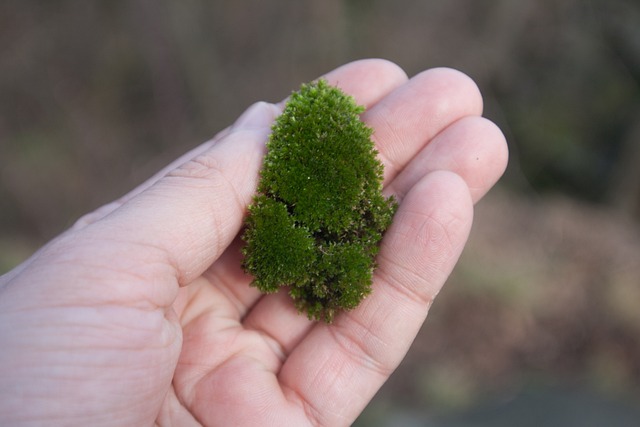
How to Plant Moss Fragments
Mosses don’t have roots like traditional plants, they have rhizoids.
Moss rhizoids won’t grow out from moss and reach down to a surface. For them to grow, they really need to be touching a surface initially.
The best way to trigger rhizoid growth is to place the moss fragments directly on some lightly scratched soil, water well, and then press the moss into the soil.
Water 1-4 times daily and re-compact to make sure the moss is still in contact with the soil.
Acrocarpous vs. Pleurocarpous
Mosses can be split into two categories:
- Acrocarpous: They have an upright growth habit and grow slower than Pleurocarpous mosses.
- Pleurocarpous: They have a prostrate (flat, branchy) growth habit and grow quicker than Acrocarpous mosses.
Acrocarpous may take 6 months to form rhizoids and up to a year to show actual foliage growth.
Acrocarps also need dry periods to thrive, you should water them more frequently at the beginning (daily) and gradually reduce watering up to the 6-month line when you water them only twice a month.
Pleurocarps can start growing as soon as 3 months after division if moisture is sufficient. They can grow continuously without any dry period.
Pro tip: Pleurocarps are effective mosses for carpeting.
How to Propagate Moss with Brood Bodies
Brood bodies form at the tip of the stems or on the leaves and eventually fall off. All they are missing is a proper structure for them to hold on to and form rhizoids.
There are two main types of brood bodies:
- Gemmae
- Propagules
Let’s see what they look like:
Gemmae
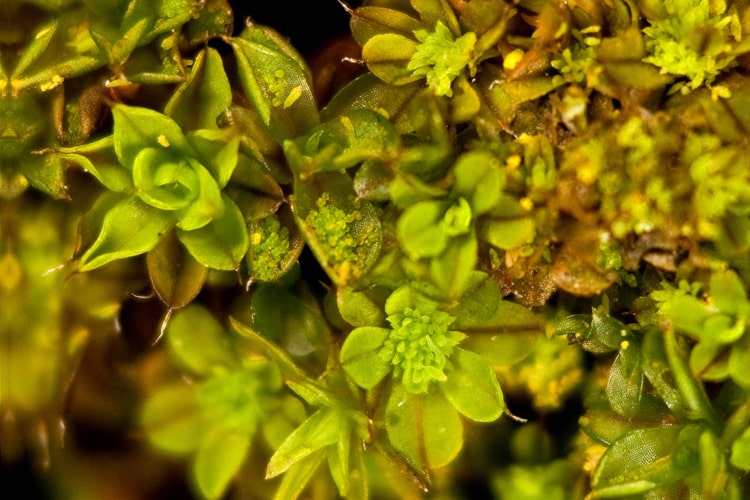
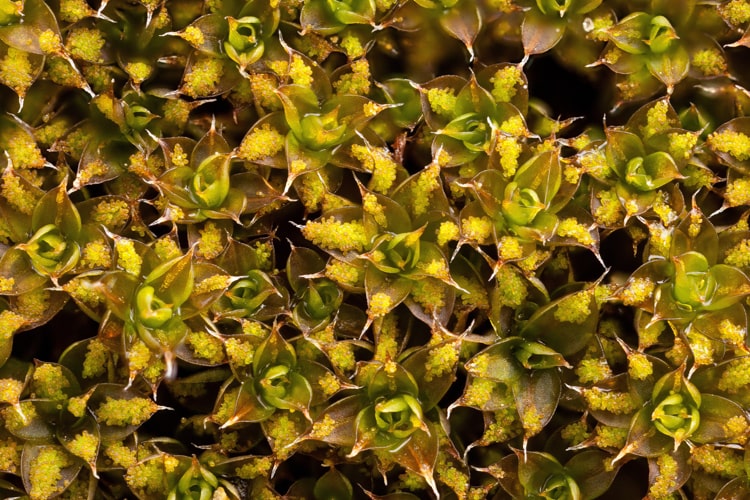
The tiny globular gemmae, which you can see on the leaves, are just clusters of a few cells each. If you can carefully break these off, or shake them off, each little gemmae will grow into an individual plant.
Propagule
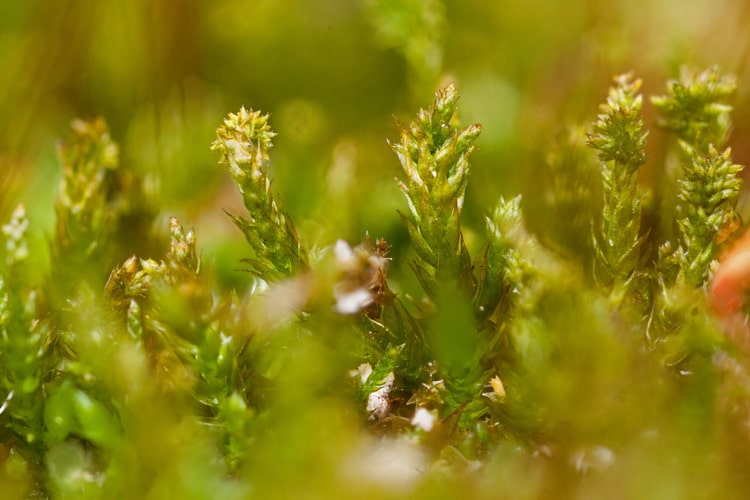
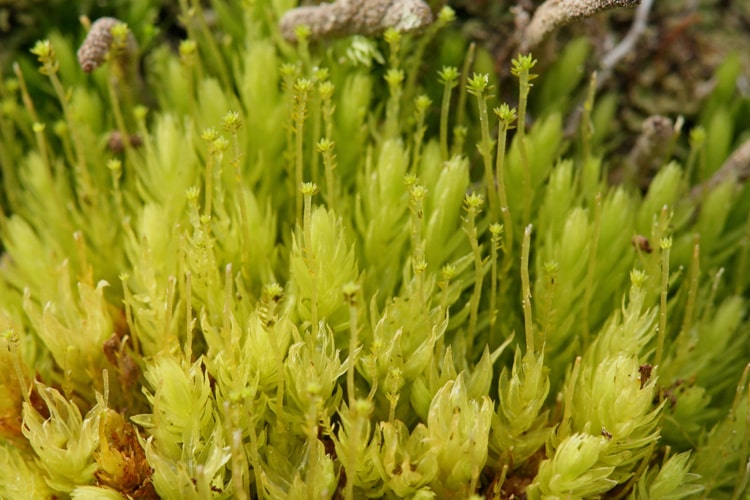
Propagules are like micro versions of the moss itself that grows at the tip of the stems. Here again, if you can carefully clip off the top propagule portion of the moss, you can plant it (upright) and it will grow into an individual plant.
For propagules or gemmae, you must use a soil medium with no debris, like a very fine sandy soil mix.
Keep them moist, in a partly-shaded area and they will grow. Personally, I have seen growth within a few weeks of transplanting.
FAQ
Q: How do I get moss to spread?
A: The best way to get moss to spread is to make sure it’s surrounded by bare soil with no debris. As long as the soil is clear of debris, new moss propagules will have soil to attach their rhizoids to and will spread.
Q: How long does moss take to propagate?
A: It depends on the technique, and the type of moss but at home, I have seen growth on moss fragments from a few weeks to a month and a half.
Q: Can you grow moss from moss?
A: Yes, by dividing the moss and replanting it on a bare soil surface, you can grow a moss carpet.
Q: How does moss propagate?
A: Moss propagates through brood bodies such as propagules or gemmae.
Q: Can you make moss grow faster?
A: Moss thrives in partly shaded, humid areas. You will grow your moss faster if you mimic its natural environment.
Q: What species of moss is best to propagate?
A: Fern moss, (Thuidium delecatulum) and sheet moss (Hypnum impones) are some of the best mosses to propagate.
This post contains Amazon affiliates links, as an Amazon Associate, eco friendly income earns from qualifying purchases. Your support will help us continue to provide quality content on plant propagation.

